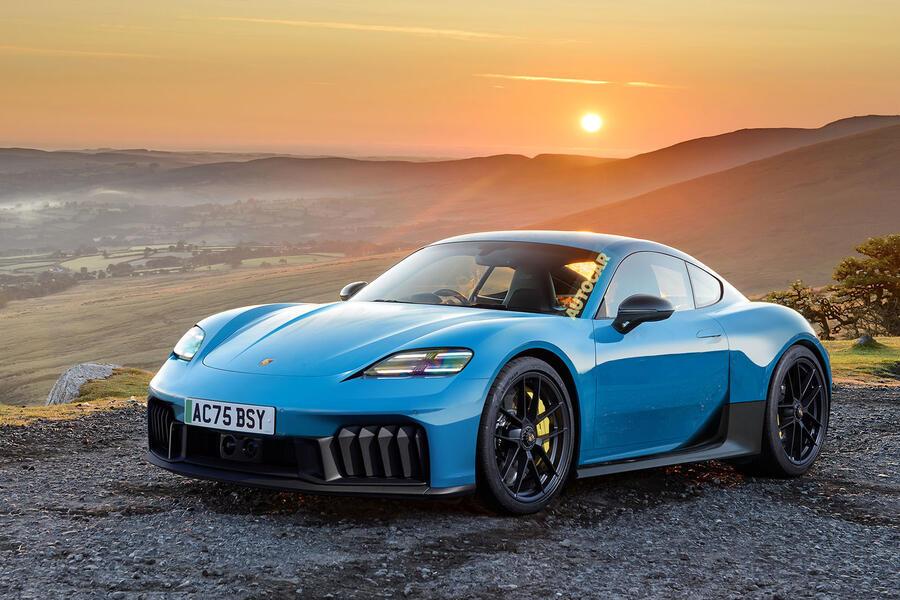Discover How Porsche is Redefining Electric Sports Cars with Race-Bred Tech

When one thinks of Porsche, images of high-performance engines, sleek curves, and exhilarating drives come to mind. However, with the automotive world shifting toward electrification, Porsche finds itself at a crossroads, creating electric variants of its beloved Boxster and Cayman models that promise to maintain the thrilling essence traditionally associated with the marque. Unlike many of their competitors, Porsche aims not only to replicate performance but to enhance it by leveraging their extensive experience in the racing world. Let’s dive deeper into how the Boxster and Cayman EVs are setting new standards in handling and efficiency.
A Different Approach to Braking
Porsche’s approach to electric driving clearly distinguishes it from others in the market, especially when it comes to braking technologies. The brand's existing electric models like the Taycan and Macan Electric offer limited regenerative braking, a choice that Chief Engineer Dr. Matthias Steiner is proud of. He emphasizes, "Our strategy is not one pedal drive." Indeed, this philosophy stems from racing; drivers prefer better control and modulation rather than being forced into an early regenerative phase that could compromise stability as the car decelerates. This perspective mirrors the preferences of many top-tier race drivers, who favor intuitive control over a one-size-fits-all system.
Steiner mentions, "The brake feel is what makes a car superior." Alluding to how critical brake feedback is for drivers, he points out that while anyone can achieve quick straight-line speeds, true sports car handling requires a nuanced understanding of the car’s dynamics, especially when cornering. The integration of both braking and regenerative systems not only optimizes energy efficiency but enhances that essential communication between driver and vehicle.
Physics-Driven Efficiency
One of the core philosophies guiding the development of the 718 twins is efficiency — both in battery usage and in vehicle dynamics. By focusing on integrated braking systems, Porsche aims to maximize its ability to recapture kinetic energy, thus allowing the development of smaller batteries without sacrificing performance. This clever engineering choice combined with the innovative e-core platform paves the way for an agile driving experience.
 EV Rendering" />
EV Rendering" />
Steiner adds that placing the battery behind the seats serves dual purposes: it helps lower the center of gravity and creates a more balanced ride. This positioning isn’t just about performance; it’s about the tactile relationship between the driver and the car. "You sit close to the road, so it’s a huge advantage over platforms where you are seated on top of the battery," he explains. This design ethos enhances the driving experience, striking a balance between performance and comfort.
An Unmatched Driving Experience
Intriguingly, prototypes of the Boxster EV have already hit the tracks, showcasing remarkable handling characteristics. Steiner expressed excitement about these early tests, particularly how the vehicle maintains a delightful connection to the road while allowing drivers to experience the joys of open-air driving without intrusive engine noise. "Driving with the roof down and hearing everything – it accentuates the beauty of landscape and electric driving in a unique way," he enthused. This new electric variant promises an experience like no other.
With the transition from internal combustion engines (ICE) to electric powertrains, some enthusiasts worry about losing the lineage that defines Porsche's sports cars. However, Steiner reassures fans that the new electric models will still embody the characteristics that make Porsche special. He notes, "Even with the best technology in an ICE, an electric car will outperform it on acceleration. We’ve managed to keep weight down, ensuring agility that rivals any model previously offered."
The Future of Porsche Performance
As Porsche gears up to release its electric Boxster and Cayman, the company is not only embracing change but leading the charge. By integrating race technology into electric drivability, they are taking a step that could redefine the sports car segment. With sharp steering, optimized braking, and an engaging driving experience, these models promise to astound traditionalists while attracting a new generation of enthusiasts.
Porsche is showing the world that electric vehicles can deliver an authentic sports car experience — one that embodies precision handling and responsive performance. As car lovers await these releases, one thing is certain: the essence of Porsche is alive and well, regardless of whether the engine is gasoline-leaded or electric.